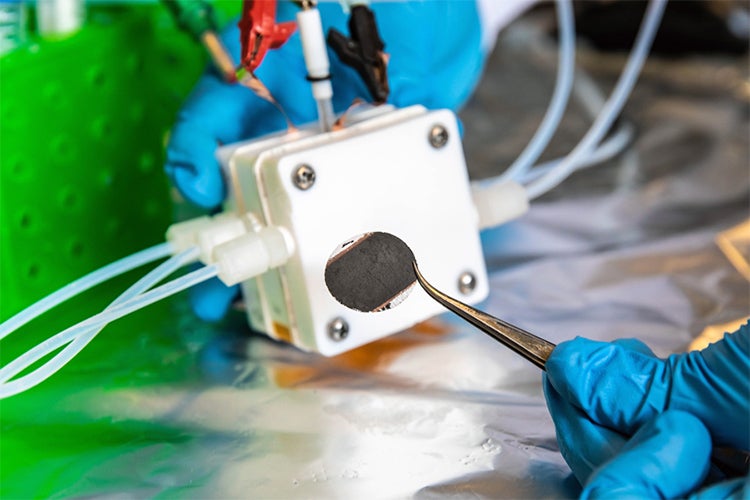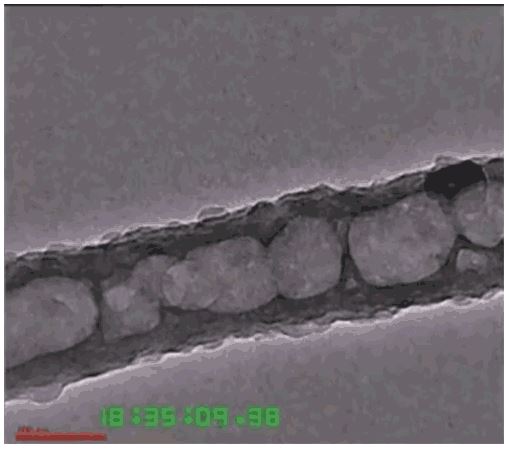(New Catalyst Recycles Greenhouse Gases into Fuel and Hydrogen Gas)
2020-02-17 大韓民国・ KAIST(旧・韓国科学技術院)

・ KAIST が、メタンドライン改質でメタンや CO2 を有用な化学物質に転換する、長寿命で安価な触媒、「Nanocatalysts on Single Crystal Edges (NOSCE)」を開発。
・ 賦存量が多く安価なニッケル、マグネシウムとモリブデンから構成される同触媒は、メタン・CO2 を水素ガスに転換する反応速度を向上し、1 ヶ月間超効率的な稼働を維持。
・ CO2 等の温暖化ガスを燃料やプラスチックの製造に利用できる有用な化学物質に転換するメタンドライ改質では、白金やロジウム等の希少で高価な金属を使用。それらによる化学反応は短時間で非効率。
・ より経済的な代替としてニッケルを触媒に使用した他の研究では、ニッケルに炭素の副生物が蓄積し、表面のナノ粒子が凝結して触媒の組成と形状を根本的に変えてその効果を損失する課題あり。
・ 新触媒は、単結晶の酸化マグネシウム(MgO)にニッケル-モリブデンナノ粒子を担持したもの。還元ガス下で全物質を加熱し、ナノ粒子が単結晶の表面上のアンカーポイントに集合して完成した同触媒は、高エネルギーの活性部位を有し、ナノ粒子の位置を固定させるため、副生物の蓄積によるコーキングやナノ粒子の凝結が起こらない。
・ 微細構造の酸化マグネシウムナノパウダーでは、そのエッジに分子が途切れることなくバインドする。破損や欠陥フリーの表面であるため、予測可能な均一的反応を促進する。
・ 基本的なメカニズムの理解に約 1 年間を費やした同触媒は、触媒のコミュニティーが直面する課題の解決に貢献できると考える。
URL: http://news.kaist.ac.kr/newsen/html/news/?mode=V&mng_no=5290&skey=category&sval=res earch&list_s_date=&list_e_date=&GotoPage=1
(関連情報)
Science 掲載論文(アブストラクトのみ:全文は有料)
Dry reforming of methane by stable Ni–Mo nanocatalysts on single-crystalline MgO
URL: https://science.sciencemag.org/content/367/6479/777
<NEDO海外技術情報より>
Overcoming surface defects
Dry reforming of methane with carbon dioxide creates a mixture of hydrogen and carbon monoxide—synthesis gas—which can be converted into liquid fuels. However, heterogeneous catalysts for this reaction are prone to deactivation through unwanted carbon deposition (coking) and loss of surface area of adsorbed metal nanoparticles through agglomeration (sintering). Y. Song et al. used highly crystalline fumed magnesium oxide to support molybdenumdoped nickel nanoparticle catalysts (see the Perspective by Chen and Xu). On heating, the nanoparticles migrated on the oxide surface to step edges to form larger, highly stable nanoparticles. This process also passivated sites for coking on the oxide to produce a catalyst with high activity and longevity at 800°C.
Science, this issue p. 777; see also p. 737
Abstract
Large-scale carbon fixation requires high-volume chemicals production from carbon dioxide. Dry reforming of methane could provide an economically feasible route if coke- and sintering-resistant catalysts were developed. Here, we report a molybdenum-doped nickel nanocatalyst that is stabilized at the edges of a single-crystalline magnesium oxide (MgO) support and show quantitative production of synthesis gas from dry reforming of methane. The catalyst runs more than 850 hours of continuous operation under 60 liters per unit mass of catalyst per hour reactive gas flow with no detectable coking. Synchrotron studies also show no sintering and reveal that during activation, 2.9 nanometers as synthesized crystallites move to combine into stable 17-nanometer grains at the edges of MgO crystals above the Tammann temperature. Our findings enable an industrially and economically viable path for carbon reclamation, and the “Nanocatalysts On Single Crystal Edges” technique could lead to stable catalyst designs for many challenging reactions.



